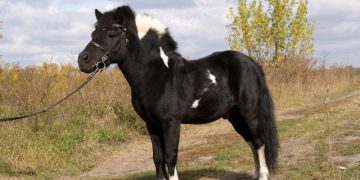Birds, like other pets, experience stress from environmental changes, lack of stimulation, poor diet, and even human interaction. Recognizing signs of stress in birds is crucial because prolonged stress can lead to serious health and behavioral issues. This guide explains how to tell if a bird is stressed, what causes stress in birds, and how you can help reduce their anxiety to improve their well-being.
Understanding Bird Stress: Why It Matters
Stress in birds affects their physical health and emotional state, often resulting in behavioral changes. Birds are sensitive to their surroundings, and stress can compromise their immune systems, making them more susceptible to infections, feather plucking, and even digestive problems. Addressing the underlying cause of stress can help birds live longer, healthier, and happier lives.
Common Signs of Stress in Birds
Recognizing stress in birds requires observing their behavior, vocalizations, body language, and physical appearance. Here are some of the most common indicators that a bird may be stressed:
1. Feather Plucking and Self-Mutilation
- Description: One of the clearest signs of stress is feather plucking or self-mutilation. Birds may pull out their own feathers or even injure their skin.
- Causes: Feather plucking is often a response to boredom, loneliness, or environmental factors like poor diet or inadequate cage space.
- What to Do: Consult an avian vet to rule out medical issues, then address environmental and social needs.
2. Changes in Vocalization
- Description: Birds may scream excessively or become unusually silent when stressed.
- Causes: Changes in routine, lack of socialization, or sudden environmental changes can lead to vocalization changes.
- What to Do: Provide consistent social interaction and identify potential stressors in their environment.
3. Aggression or Sudden Changes in Temperament
- Description: Birds that are typically friendly may become aggressive, biting or lunging unexpectedly.
- Causes: Aggression can stem from fear, territoriality, or changes in the home environment, such as new pets or people.
- What to Do: Give the bird some space and gradually reintroduce positive social interactions.
4. Loss of Appetite
- Description: A stressed bird may lose interest in food or water, which can lead to malnutrition and dehydration.
- Causes: Loss of appetite may result from loneliness, health issues, or environmental changes.
- What to Do: Encourage eating by offering favorite treats and monitoring for further signs of illness.
5. Excessive Sleeping or Lethargy
- Description: Birds that are stressed may become less active and sleep more than usual.
- Causes: Stress-induced lethargy is often caused by physical discomfort or mental exhaustion.
- What to Do: Ensure the bird is receiving sufficient rest and provide toys and activities to engage them mentally.
6. Unusual Postures and Body Language
- Description: Birds exhibit specific body language when stressed, such as standing with feathers fluffed up for extended periods, wing flipping, or tail bobbing.
- Causes: Body language changes may indicate anxiety, discomfort, or illness.
- What to Do: Observe these signs closely, as they may require veterinary attention.
7. Regurgitation or Vomiting
- Description: While regurgitation is a natural part of bonding, excessive or unusual vomiting can indicate stress.
- Causes: Stressful stimuli, diet changes, or illness can lead to abnormal regurgitation.
- What to Do: Monitor the bird’s diet, and if vomiting persists, seek veterinary care.
8. Pacing or Repetitive Movements
- Description: Stressed birds may pace along perches or exhibit repetitive motions such as head bobbing or swinging.
- Causes: Pacing often indicates boredom or lack of stimulation, particularly in smaller cages.
- What to Do: Increase space, introduce new toys, or provide time outside the cage.
Causes of Stress in Birds
There are several factors that can cause stress in birds. Recognizing these can help prevent stress before it becomes an issue.
1. Environmental Changes
- Cause: Moving to a new home, rearranging furniture, or introducing new pets can be stressful for birds.
- Solution: Gradually introduce changes and give birds time to adjust to new environments.
2. Inadequate Cage Size and Setup
- Cause: Birds need space to move, fly, and play; small or poorly equipped cages can increase stress.
- Solution: Choose an appropriately sized cage with a variety of perches and toys to mimic their natural environment.
3. Poor Diet
- Cause: An imbalanced diet lacking in essential nutrients can lead to stress and health problems.
- Solution: Provide a balanced diet that includes high-quality pellets, fresh fruits, vegetables, and occasional seeds.
4. Lack of Social Interaction
- Cause: Birds are social creatures, and isolation can lead to anxiety and loneliness.
- Solution: Spend time with your bird daily, provide toys, and consider a companion bird for social species.
5. Loud Noises or Unfamiliar Sounds
- Cause: Birds are sensitive to noise, and sudden loud sounds can create anxiety.
- Solution: Minimize exposure to loud sounds, and avoid placing cages near televisions or areas with frequent noise.
6. Health Issues
- Cause: Illness or discomfort can make birds stressed, as they are naturally inclined to hide signs of sickness.
- Solution: Regular veterinary check-ups can help catch any health issues early and reduce stress.
7. Inconsistent Routine
- Cause: Birds thrive on routine, and disruptions to feeding, lighting, or interaction schedules can lead to stress.
- Solution: Stick to a regular routine as much as possible to keep your bird feeling secure and comfortable.
Tips to Reduce Stress in Birds
Here are some effective methods to help a bird feel safe, relaxed, and comfortable in its environment:
1. Provide a Safe, Comfortable Environment
- Ensure the cage is in a quiet, stable area where the bird feels safe and is protected from drafts, loud noises, and sudden movements.
2. Enrich Their Environment
- Use toys, foraging activities, and perches to create a stimulating environment that mimics their natural habitat.
3. Maintain a Healthy Diet
- Offer a balanced diet to ensure they receive all the nutrients they need to stay healthy and manage stress better.
4. Regular Exercise and Out-of-Cage Time
- Birds need space to exercise and stretch their wings. Allow supervised time outside the cage for physical and mental stimulation.
5. Establish a Consistent Routine
- A stable daily routine helps birds feel more secure. Feed, interact, and put them to bed around the same time each day.
6. Practice Positive Interaction
- Avoid sudden movements or loud noises when interacting with birds. Use positive reinforcement techniques, such as treats, to build trust.
7. Consider a Companion
- Some bird species are social by nature, and a compatible bird companion can help alleviate loneliness and provide enrichment.
8. Provide Regular Health Checkups
- Schedule check-ups with an avian vet to monitor health and address any underlying issues that may cause stress.
When to Seek Veterinary Help
If your bird shows persistent signs of stress, it’s best to consult an avian veterinarian. Certain stress behaviors may indicate an underlying health problem, and a professional can provide guidance on treatment options or behavior modification techniques.
Conclusion
Understanding the signs and causes of stress in birds can greatly improve their quality of life. By creating a safe, enriching, and predictable environment, you can help reduce their stress and enhance their well-being. Birds are highly sensitive animals that thrive on stability, social interaction, and mental stimulation, so regular care and attention are essential. Recognizing when a bird is stressed and taking proactive steps can lead to a happier, healthier bird and a stronger bond with your feathered friend.
This article provides a detailed guide on identifying and managing stress in birds, emphasizing the importance of a supportive, enriching environment. By following these tips, bird owners can help ensure their feathered companions are comfortable, healthy, and free from unnecessary stress.

























